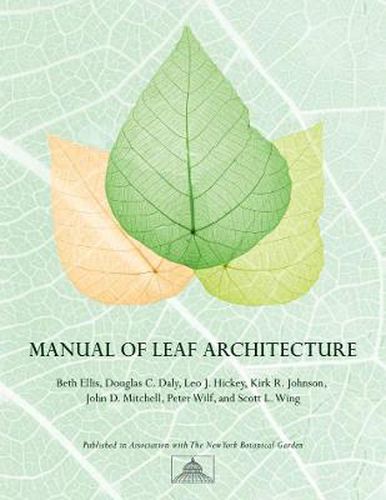Readings Newsletter
Become a Readings Member to make your shopping experience even easier.
Sign in or sign up for free!
You’re not far away from qualifying for FREE standard shipping within Australia
You’ve qualified for FREE standard shipping within Australia
The cart is loading…






This is an essential reference for describing, measuring and classifying the foliage of flowering plants. The presented system provides long-needed guidelines for characterizing the organization, shape, venation, and surface features of angiosperm leaves. In contrast to systems focusing on reproductive characters for identification, the emphasis is on macroscopic features of the leaf blade including leaf characters, venation, and tooth characters. The advantage of this system is that it allows for the classification of plants independently of their flowers, which is especially useful for fossil leaves (usually found in isolation) and tropical plants (whose flowering cycles are brief and irregular, and whose fruits and flowers may be difficult to access). An illustrated terminology including detailed definitions and annotated illustrations is the focus of the classification system, the aim of which is to provide a framework with comparative examples to allow both modern and fossil leaves to be described and classified consistently. Published in association with the New York Botanical Garden.
$9.00 standard shipping within Australia
FREE standard shipping within Australia for orders over $100.00
Express & International shipping calculated at checkout
This is an essential reference for describing, measuring and classifying the foliage of flowering plants. The presented system provides long-needed guidelines for characterizing the organization, shape, venation, and surface features of angiosperm leaves. In contrast to systems focusing on reproductive characters for identification, the emphasis is on macroscopic features of the leaf blade including leaf characters, venation, and tooth characters. The advantage of this system is that it allows for the classification of plants independently of their flowers, which is especially useful for fossil leaves (usually found in isolation) and tropical plants (whose flowering cycles are brief and irregular, and whose fruits and flowers may be difficult to access). An illustrated terminology including detailed definitions and annotated illustrations is the focus of the classification system, the aim of which is to provide a framework with comparative examples to allow both modern and fossil leaves to be described and classified consistently. Published in association with the New York Botanical Garden.